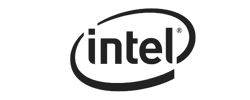The Skills Layer of the Problem Centric™ Operating System
People We Work With:
Why the Skills Layer Matters
Sales organizations don’t fail because their sellers aren’t busy. They fail because their sellers don’t have the right skills to diagnose problems, quantify impact, and drive consensus in live deals. Skills are the foundation of revenue. But in most companies, the skills layer has been reduced to an event: a one-time training, a certification, a deck, a new tool. Reps “learn,” but they don’t change. Managers track participation, not performance. And leadership wonders why revenue results don’t move. That’s the trap. When the skills layer is disconnected from execution, it becomes expensive theater. CAC rises, forecasts slip, win rates stagnate, and buyers complain about getting pitched solutions instead of having their problems solved.
That’s why ASG created the Problem-Centric OS™—the only operating system in the market, and the only approach built entirely on problem centricity. Because skills don’t matter in a vacuum. They only matter if they’re wired into how sellers sell, how managers coach, and how leaders forecast.
What the Skills Layer Is
This is the what sellers must understand. It is proactive, not reactive. It defines:
- The problems your buyers face
- The root causes of those problems
- The business impact of leaving them unresolved
- How your solution uniquely addresses them
This knowledge is built from your Problem Identification Chart (PIC). It ensures every seller is fluent in the customer’s world—not just your product.
This is the how. The practical, observable skills that turn knowledge into action. Core competencies include:
- Problem identification & reframing
- Root cause diagnosis
- Quantifying business impact (“deal math”)
- Hypothesis-driven discovery
- Multi-threading and building consensus
- Executive-level storytelling and writing
- Negotiation through problem resolution
- Opportunity strategy and call planning
- Coaching as a frontline manager (ODP)
Skills are worthless without reinforcement. This is where too many organizations fall down. The Skills Layer embeds into the operating rhythm of the business through:
- Discovery mapped to PIC → Buyer Input Data (BID) capture
- Call planning centered on problem outcomes
- Deal reviews anchored in evidence, not opinion
- Weekly coaching using ODP (Observe → Describe → Prescribe → Absorb → Apply)
- Film review, snippet libraries, and practice drills
- Pipeline hygiene and forecast reviews built on skill application
Where the Skills Layer Fits in the OS
The Skills Layer is the foundation, but it is only powerful when connected:
- Skills Layer defines the knowledge and competencies sellers must master, and the system for teaching and reinforcing them.
- Opportunity Layer ensures those skills are applied in real deals, with reinforcement through coaching, observation, and deal reviews.
- Forecast Layer validates that what sellers learn and do actually shows up in decision-grade evidence for accurate forecasts.
ASG is the only company with an operating system that unifies all three. Every other provider sells disconnected training, methodology, or tools. We built the OS to make sure the skills layer actually delivers measurable revenue outcomes.

“We migrated our thinking from ‘let me sell you a product’ to let me help you solve problems'”
Matt Gahr, CRO – Emburse
What Happens Without It
When organizations treat the skills layer as “just training,” here’s what happens:
- Training Theater. Certifications rise, but quota attainment doesn’t.
- Execution Breakdown. Sellers revert to pitching products under pressure.
- Buyer Frustration. In our How Buyers Want to Be Sold research, 63% of buyers said they wished sellers pushed them harder to think about their situation before being pitched a solution.
- Wasted Investment. L&D and Enablement spend millions without moving the metrics that matter: win rates, deal velocity, forecast accuracy, CAC.
How to Assess Your Skills Layer
Ask yourself: is your skills layer designed for knowledge attainment or for performance improvement?

Is it Problem Centric?
Do you start with a Problem Identification Chart (PIC) as the basis for training?

Are competencies clearly defined?
Can you list the observable abilities every rep must master to win in your market?

Is it connected to opportunities?
Are skills reinforced in live deals, deal reviews, and discovery calls, or only in the classroom?

Is measurement tied to outcomes?
Are you tracking win rate, velocity, ACV, and forecast accuracy—or just LMS logins and certifications?

Are managers enabled to coach?
Do frontline managers have a framework (ODP) and the time to consistently reinforce skills in the field?
Is it part of an OS?
Or is it a silo—training that sits on its own, disconnected from execution and forecasting?

The Right Way to Leverage the Skills Layer
When properly leveraged, the Skills Layer becomes a multiplier for growth:
- Prioritize the right skills (those tied directly to problem diagnosis and business outcomes).
- Integrate skills into the processes sellers already run—discovery, deal reviews, forecasting.
- Wire skills into the Opportunity Layer (live execution).
- Equip managers to coach using frameworks like ODP.
- Measure adoption only when it shows up in revenue outcomes.
Closing Thought
The Skills Layer is the foundation of that OS. But it’s not just about knowledge or training. It’s about proactively defining what must be taught, building the competencies sellers need, and embedding them into the processes that drive revenue.
Traditional training and enablement got stuck chasing content usage and certifications. We built the Problem-Centric OS™ to break that cycle.
Because skills only matter if they change the outcome of a deal.
When Every Fix Fails, It’s Time for a System
Let’s talk about how the Problem Centric™ OS can drive predictable growth in your organization.








